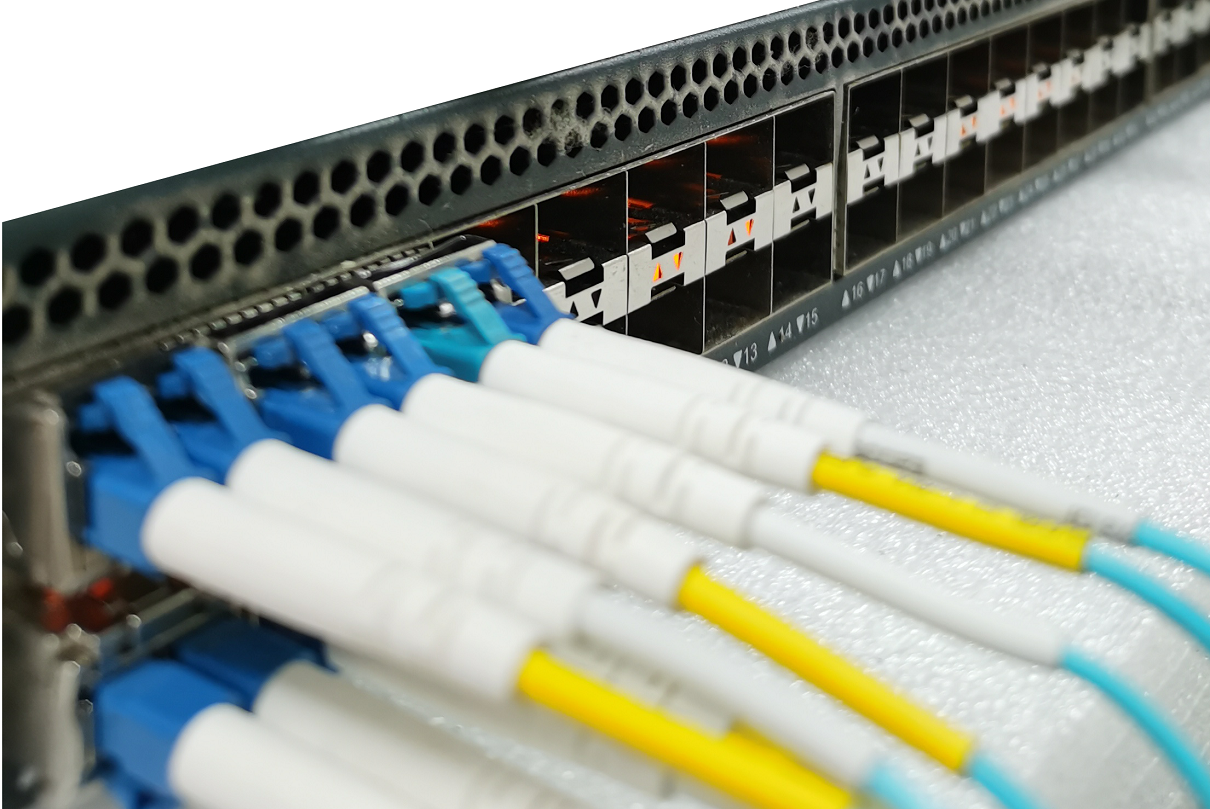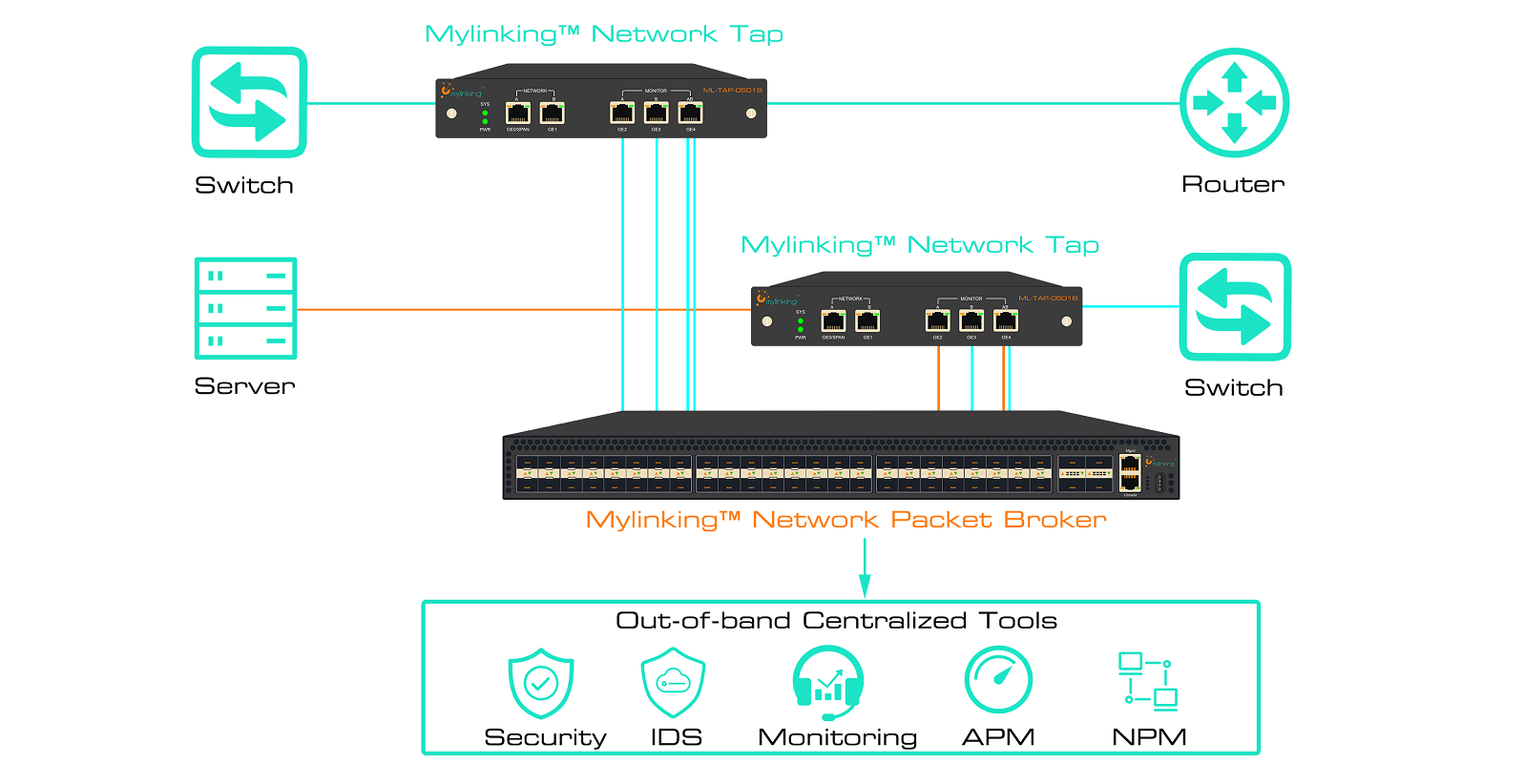What common problems can be solved by Network Packet Broker?
We've covered these capabilities and, in the process, some of NPB's potential applications. Now let's focus on the most common pain points that NPB addresses.
You need the Network Packet Broker where your network access of the tool is limited:
The first challenge of network packet broker is restricted access. In other words, copying/forwarding the network traffic to every security and monitoring tools as its needs, it is a big challenge. When you open the SPAN port or install TAP, you must have the traffic source that may need to forward it to many out-of-band security tools, and monitoring tools. In addition, any given tool should actually receive traffic from multiple points in the network to eliminate blind spots. So how do you get all the traffic to each tool?
NPB fixes this in two ways: it can take a traffic feed and copy an exact copy of that traffic into as many tools as possible. Not only that, but NPB can take traffic from multiple sources at different points on the network and aggregate it into a single tool. Combined the two functions together, you can accept all of the source from the SPAN and TAP to monitor port, and put them in the summary to the NPB. Then, according to the need of out-of-band tools for replication, aggregation, and copy, load balance forwarding the traffic flow to each out-of-band tool as your environment, to each tool flow will be maintain by accurate control, it also include some unable to deal with traffic.
As mentioned earlier, protocols can be stripped from traffic, otherwise tools may be prevented from analyzing them. NPB can also terminate a tunnel (such as VxLAN, MPLS, GTP, GRE, etc.) so that various tools can parse the traffic contained within it.
Network packets also act as a central hub for adding new tools to the environment. Whether inline or out of band, new devices can be connected to the NPB, and with a few quick edits to the existing rule table, new devices can receive network traffic without interrupting the rest of the network or rewiring it.
Network Packet Broker - Optimize your Tool Efficiency:
1- Network Packet Broker help you take full advantage of monitoring and security devices. Let's consider some of the potential situations you might encounter using these tools, where many of your monitoring/security devices may be wasting traffic processing power unrelated to that device. Eventually, the device reaches its limit, handling both useful and less useful traffic. At this point, the tool vendor will certainly be happy to provide you with a powerful alternative product that even has the extra processing power to solve your problem... Anyway, it's always going to be a waste of time, and extra cost. If we could get rid of all the traffic that makes no sense to it before the tool arrives, what happen?
2- Also, assume that the device only looks at header information for the traffic it receives. Slicing packets to remove the payload, and then forwarding only the header information, can greatly reduce the traffic burden on the tool; So why not? Network Packet Broker(NPB) can do this. This extends the life of existing tools and reduces the need for frequent upgrades.
3- You may find yourself running out of available interfaces on devices that still have plenty of free space. The interface may not even be transmitting near its available traffic. The aggregation of NPB will solve this problem. By aggregating data flow to the device on the NPB, you can leverage each interface provided by the device, optimizing bandwidth utilization and freeing interfaces.
4- On a similar note, your network infrastructure has been migrated to 10 Gigabytes and your device has only 1 gigabyte of interfaces. The device may still be able to easily handle the traffic on those links, but cannot negotiate the speed of the links at all. In this case, the NPB can effectively act as a speed converter and pass traffic to the tool. If bandwidth limited, the NPB can also extend its life again by discarding irrelevant traffic, performing packet slicing, and load balancing the remaining traffic on the tool's available interfaces.
5- Similarly, NPB can act as a media converter when performing these functions. If the device only has a copper cable interface, but needs to handle traffic from a fiber optic link, the NPB can again act as an intermediary to get traffic to the device again.
Mylinking™ Network Packet Broker - Maximize your investment in security and monitoring equipment:
Network packet brokers enable organizations to get the most out of their investment. If you have the TAP infrastructure, the network packet broker will extend access to siphoning traffic to all devices that need it. NPB reduces wasted resources by eliminating extraneous traffic and diverting functionality from network tools so that they can implement the functionality, which designed to do. NPB can be used to add higher levels of fault tolerance and even network automation to your environment. Improves response times, reduces downtime, and frees up people to focus on other tasks. The efficiencies brought by NPB increase network visibility, reduce capex and operating costs, and enhance organizational security.
In this article, we've looked extensively at what a network packet broker is? What any viable NPB should do? How to deploy NPB into a network? Moreover, what common problems they could solve? This is not an exhaustive discussion of network packet brokers, but hopefully, it helps explain any questions or confusion about these devices. Perhaps some of the examples above illustrate how NPB solves problems in the network, or suggest some thoughts on how to improve environmental efficiency. Sometimes, we will also need to look at specific issues and how the TAP, network packet broker and probe to work?
Post time: Mar-16-2022






